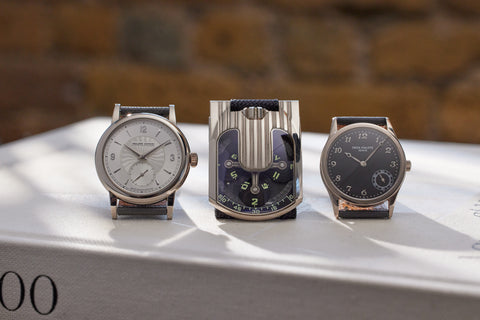This Lang & Heyne Georg* is not only one of the first of the line to feature a more minimal, two-lug arrangement, it remains part of a very small number the brand ever made in this configuration. The platinum case is 40mm long and 32mm wide, while the white enamel dial is thoughtfully arranged for accurate time-reading. The calibre VIII is remarkable because of its layout where each wheel and element is anchored by an independent bridge. The elegant details are heightened by the obvious hand finishing.
Art Deco
Just look at the many names that have entered the canon of design history, and the diversity of their disciplines too, yet all moulded by the ethos of Art Deco: in fashion advertising the likes of Erte, and in advertising the likes of Cassandre; Ruhlmann and Lalique in glassware, Kem Weber in set design; in fine art Jean Dupas, Tamara de Lempika and Paul Manship; in architecture William Van Alen, Oskar Hansen and Ralph Walker; in product design Henry Dreyfuss, Russel Wright, Raymond Loewy, and Norman Bel Geddes, among others. Art Deco became a vernacular through which all could create.
Art Deco - first given full vent at the Exposition Internationale des Arts Decoratifs et Industriels Modernes in Paris in 1925, but coming into view in the years proceeding - offered a vision of the world that was progressive, confident, luxurious, expansive, familiar and yet simultaneously futuristic. What it didn’t do - as so many design movements before had done - was come with a demanding manifesto.




Rather, it maintained some continuity with the past: the florid exuberance of Art Nouveau or the ornamentation of Victoriana, for instance, even nods to Ancient Greece or Egypt. But with its directness of forms, its monolithic, stepped buildings, its geometry and streamlining, its readiness to use both the elaborate, high craft of bespoke, as well as new mass-manufactured materials the likes of tubular steel, chrome and new plastics, Art Deco managed to look simultaneously forward.




































































































































































































